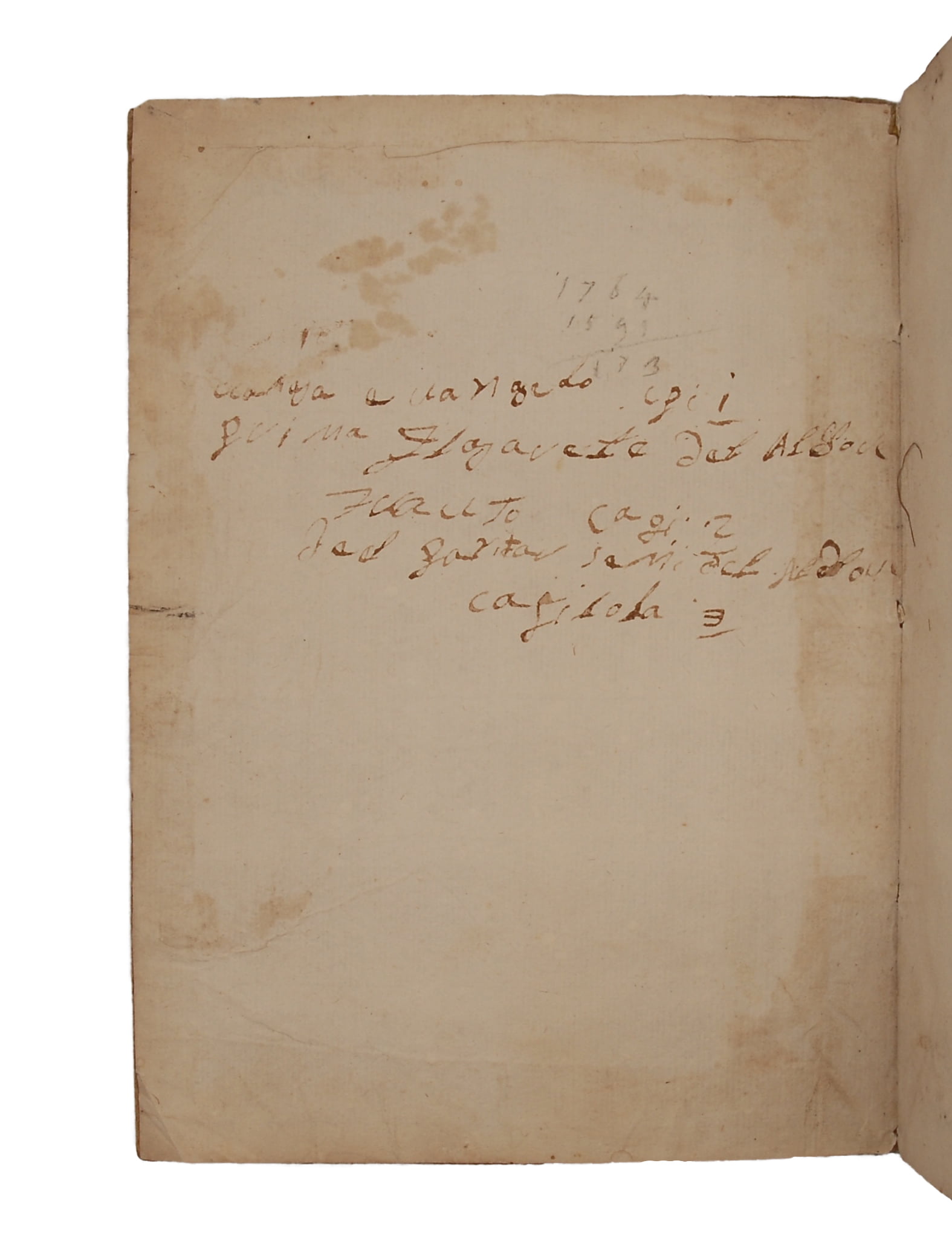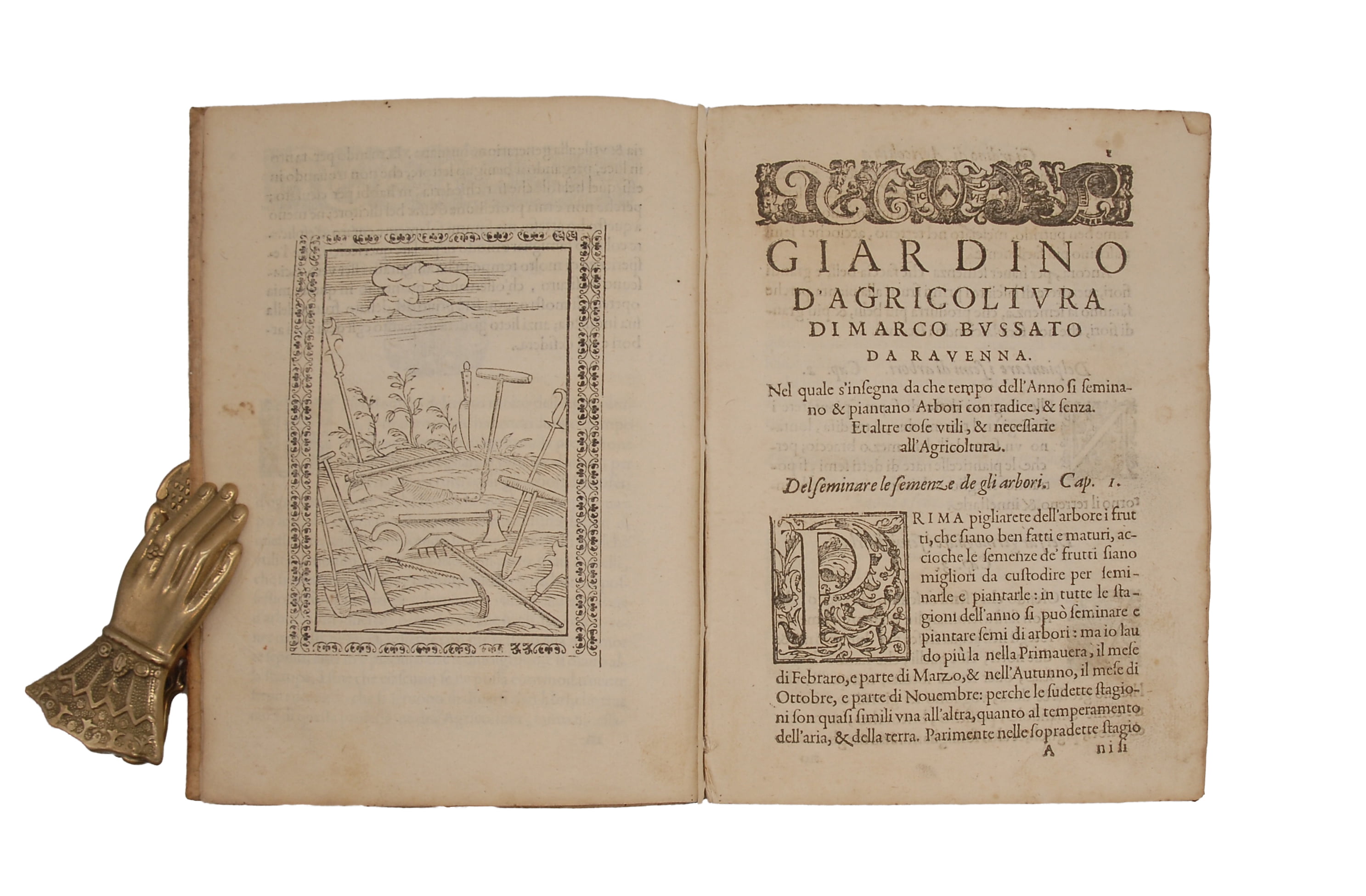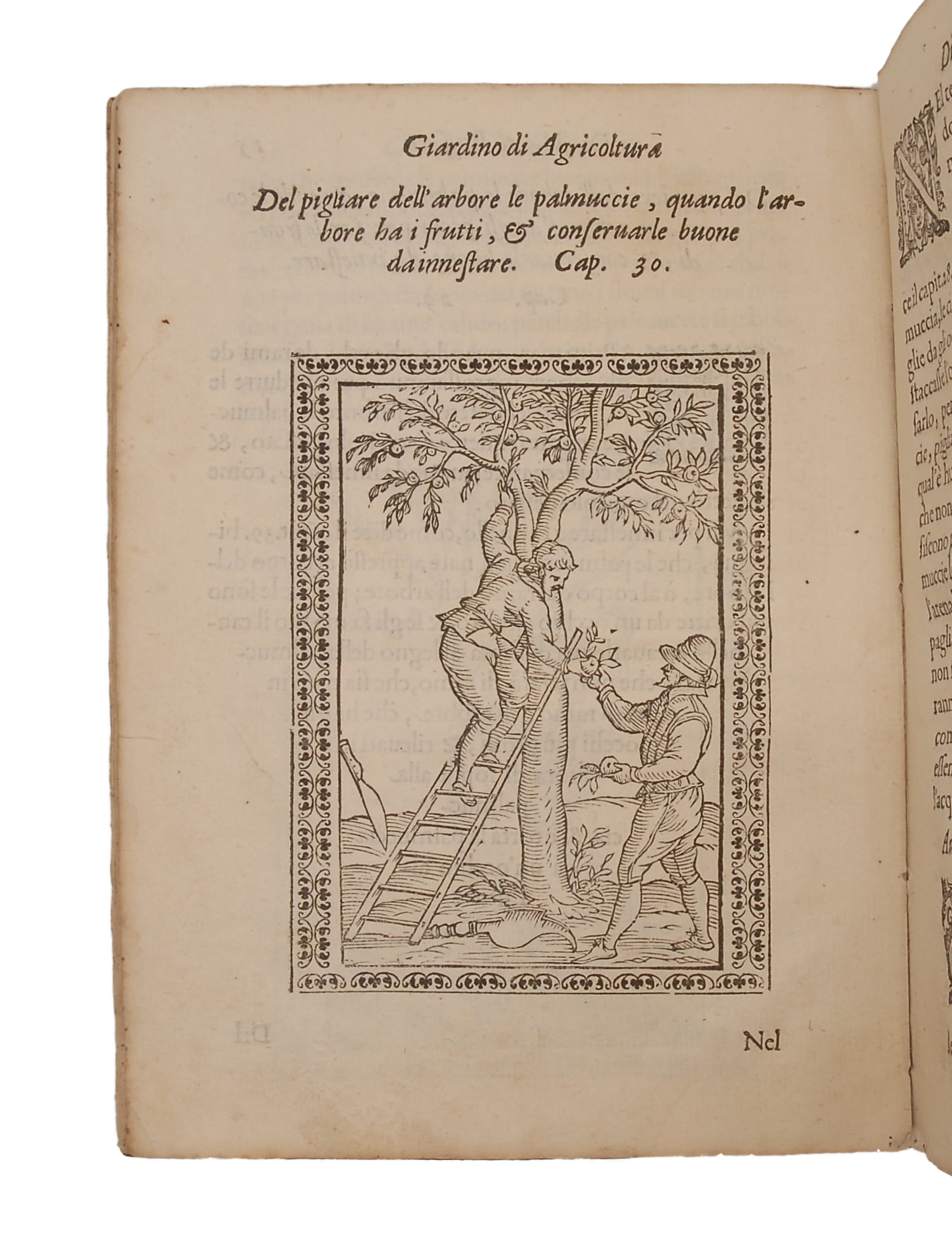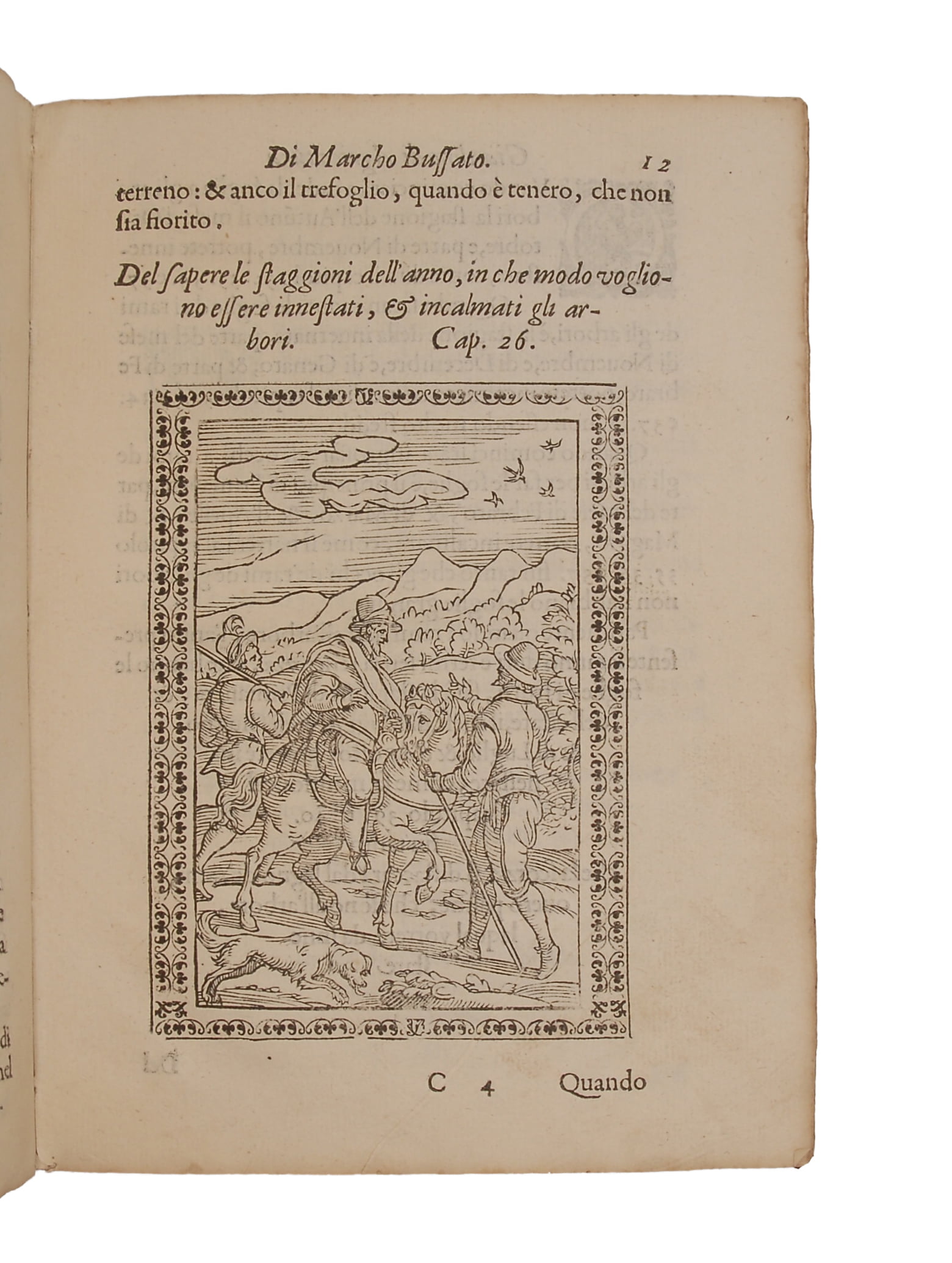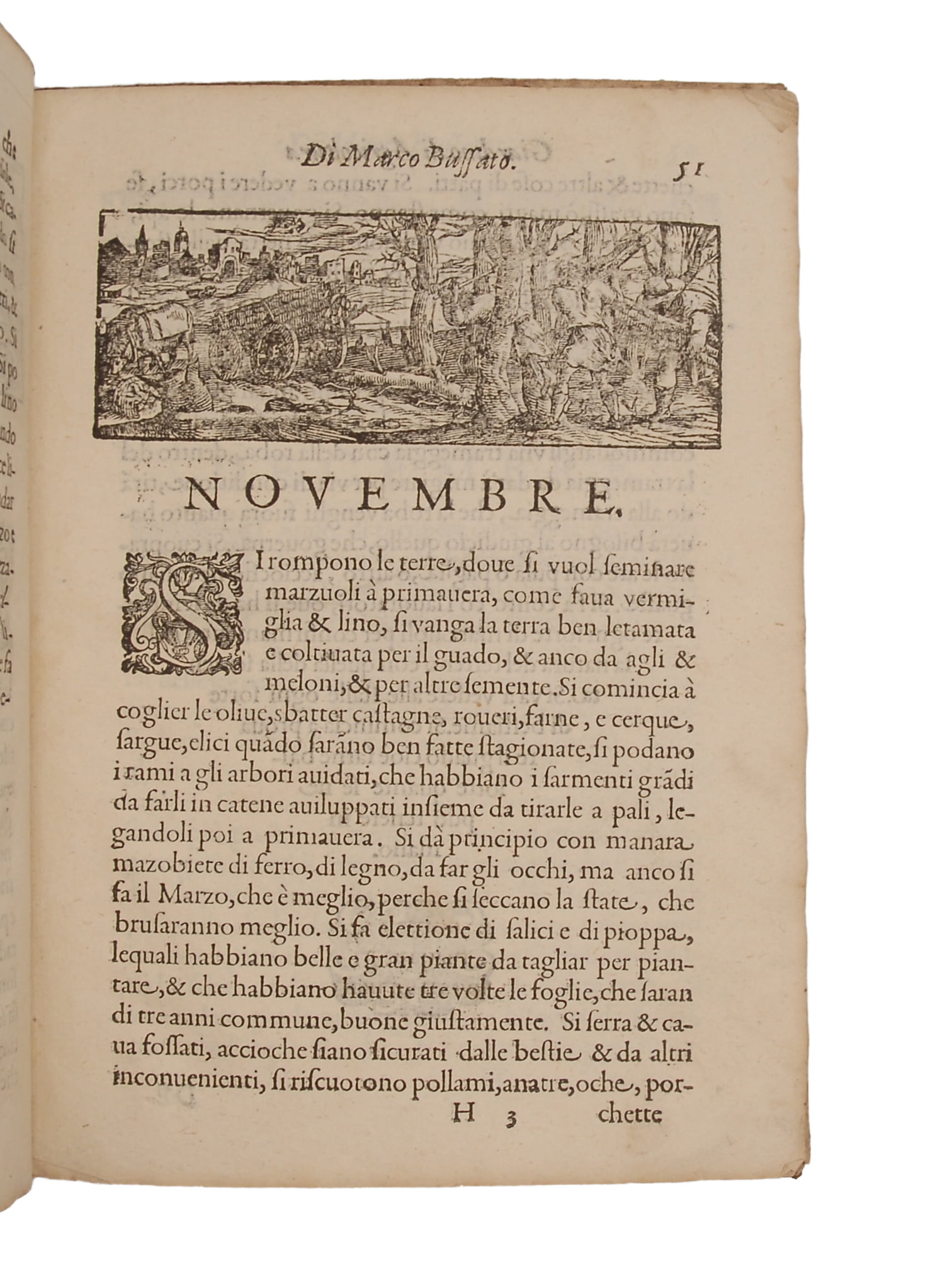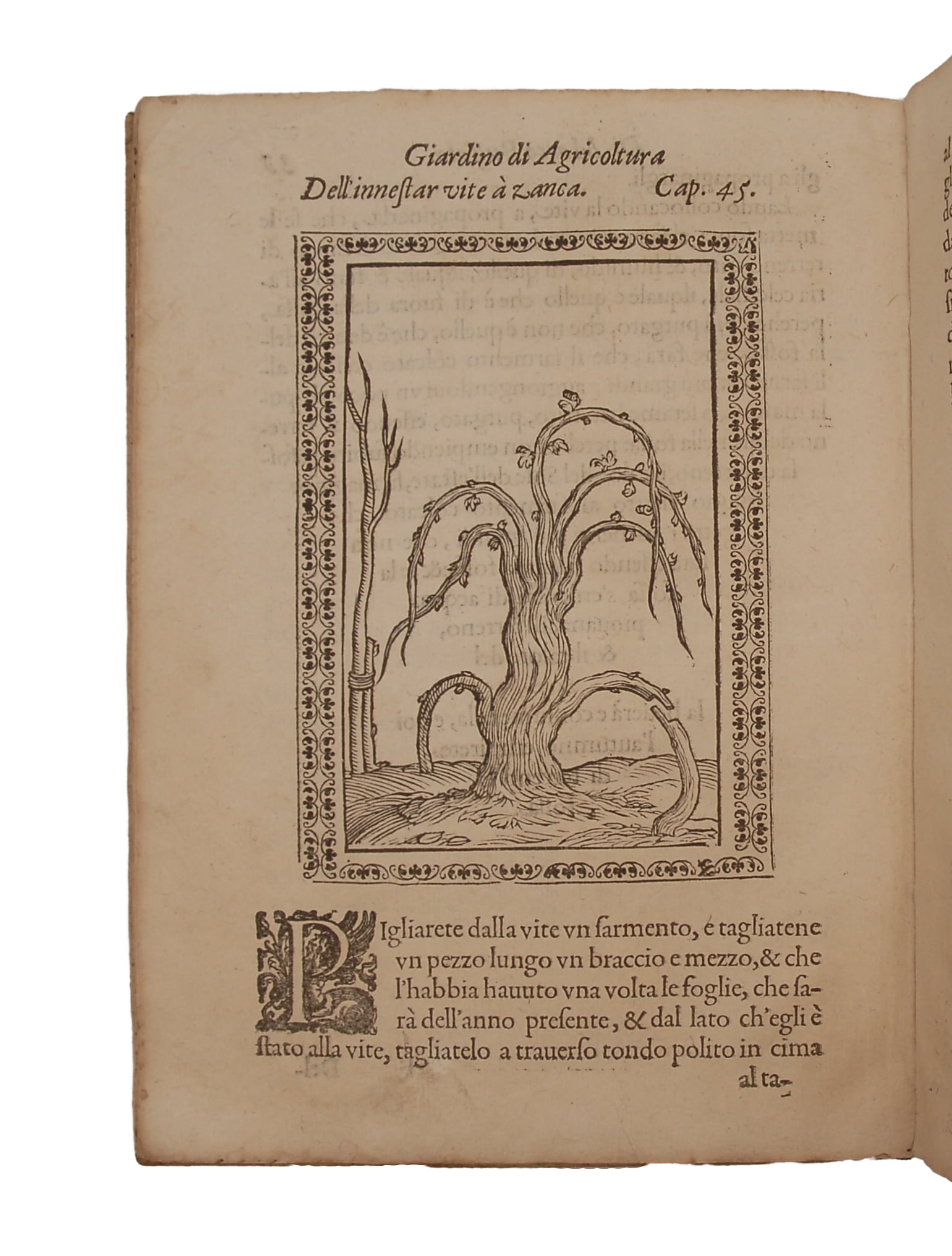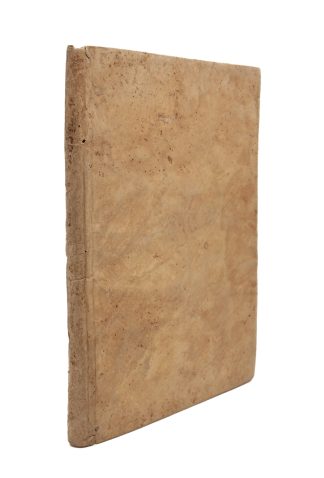BUSSATO, Marco.
Giardino di agricultura.
Venice, [Domenico Nicolini da Sabbio] appresso Giovanni Fiorina], 1592£3,250.00
FIRST EDITION. 4to, ff. (vi) 53 (iii). Roman and italic letter, printer’s device to t-p, woodcut floriated and historiated initials, typographical ornaments, two charming headpieces and one tailpiece with foliage and grotesques. 20 ¾ page woodcuts illustrating grafting techniques, gardening instruments and landscapes (one repeated 3 times), 12 ¼ page vignettes depicting monthly tasks. T-p a bit dusty, yellowing to one central gathering, occasional fingersoiling to outer blank margins, small stain from a wax drop to 6 ll. (affecting two words), small tear to lower outer corner of one fol. not affecting text. A good copy in contemporary vellum, covers a bit worn, small hole to spine, missing ties. Early ms. annotations indicating chapters and contents of the book to verso of fly, later ms. ex libris “D’Andrea Serafini” and “St. Maren(?)” to t-p.
A good copy of the first edition of this successful work on horticulture. Marco Bussato (Bussati or Busatti, first half of the 16th century – after 1600) was born in Ravenna. Orphaned at an early age, he earned his living as an itinerant expert of arboreal grafting: he visited “many places in Italy” and Rome in particular, learning the agricultural practices of different regions. A manual based on his experience, ‘Giardino d’agricoltura’ presents horticulture as an art of which its readers will learn the ‘most beautiful secrets’. Bussato’s perspective is that of a vigilant and attentive landowner. A rather ‘aristocratic’ point of view evident in the distinction that he makes between useful and delightful agriculture, despising herbaceous plants that require “great effort and sweat” and concentrating on tree crops, that bring “joy to the eye”. The latter are more ‘suitable’ for the gentleman, and indispensable elements of that taste for the landscape that dominates Renaissance agriculture.
The 64 chapters focus on the growth of fruit trees, with a few excursions into the cultivation of cereals, the production of wine, breeding pigeons, and other country activities. “In spite of its title, Bussato’s main subject is fruit trees, from seedlings in their nursery to the careful pruning of mature trees, illustrated with some of the first accurate and detailed diagrams of methods of grafting. These illustrations first appeared in the author’s ‘Prattica historiata dell’inestare gli arbori’, a treatise on grafting alone, which was published in Ravenna in 1578. Its text was revised and included in the larger ‘Giardino’ in 1592, which was itself enlarged for later editions in 1593 and 1612. A monthly calendar of work to be done in the garden completes the book, each month with its own head-piece showing an occupation appropriate to the season. E.A. Bunyard, writing in 1923 in the Journal of the Royal Horticultural Society about early Italian gardening books, said of Bussato that “The author was a poet, and the book is written in rather more literary style than usual in such treatises”. The elegance of its printing is equally unusual in books of this kind, though given the date and place of its publication that is perhaps less remarkable.” (Raphael) This volume includes a tailpiece with two winged figures with trumpets (fol. G5, recto) which, according to Mortimer (Harward Italian 95), does not appear on all copies.
The manuscript ex-libris might belong to the Italian public land surveyor Andrea Serafini, active at the half of the 18th century in the Veneto region. His name is recorded in the archives of the State of Venice (ASVe, Provveditori sopra beni comunali, b. 232, neg. 1949), and various sources mention his work in measuring the extension of fields, wine-making estates and woods. A skilled illustrator, he realised several detailed drawings and maps of cities and lands as part of his job; these are particularly interesting nowadays for the study of the historical geography of north-eastern Italy.
USTC 817291; Brunet p. 1419; Graesse I, p. 581; BM STC It. 16th century p. 132, Pritzel B1594; Mortimer 95. This ed not in Adams. S. Raphael, A wine making Pomona, A Selection of the Rare Books on Fruit in the Oak Spring Garden Library (1990).In stock



